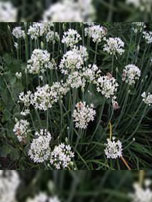SHAHEED KARTAR SINGH SARABHA AYURVEDIC MEDICAL COLLEGE & HOSPITAL
Affiliated to Guru Ravidas Ayurved University, Hoshiarpur Punjab
Affiliated to Guru Ravidas Ayurved University, Hoshiarpur Punjab

Botanical Name : Allium sativum Linn.
Family : Liliaceae, Alliaceae
Introduction :
Rasona commonly used for the vata disorders.
Scientific classification: Garlic belongs to the family Liliaceae. Common garlic is classified as Allium sativum, British wild garlic as Allium oleraceum, and American wild garlic as Allium candense. The field garlic of Europe and the Americas is classified as Allium vineale. False garlic is classified as Nothoscordum bivalve.
Names in different Indian languages :
English : Garlic.
Hindi : Lahasun
Kannada : Belluli
Malayalam : Velluli
Sanskrit : Lasunah, rasonah
Tamil : Vellai puntu
Telugu : Vellulli
Unani : Seer, Lahsun
Synonyms :
Yavaneshta, Ugragandha, Mahaushadh, Arishta
Varieties & adulterants – (CV – controversy, AD – adulterants) :
1.Girija
2. Ksetraja
3. Allium ascaloniurn
Morphology :
A bulbous herb, 60 cm high.
Leaves— long, flat, acute, sheathing the lower half of stem. Flowering scape slender, smooth, shining; spathes long, beaked.
Flowers— small, white, prolonged into leafy points.
Flowers :during winter.
Distribution & Habitat :
Native to Central Asia. Cultivated all over India.
Chemical constituents :
Alliin, Volatile oil, white liquid. albumin, sugar, jelly like substance. The volatile oil which is yellow in colour contains organic sulphur. Alliin; Carbohydrates (arabinose, galactose etc); vitamins (folic acid, niacin, riboflavin, thiamine, vit.c); amino acids (arginine, asparagic acid, niethionine etc.); enzymes (allinase); volatile compounds (allylalcohol, allylthiol, allylpropyl disuiphide etc.); thioglycosides (scordine, scordinine A1, A2 & B etc.); prostaglandins A2, D2 E2 and F2 allylmethylselenide, ajoene, proteoruboside B.
Properties :
Rasa Madhura, Lavana, Katu, Tikta, Kasãya
Guna Snigdha, Guru, Tiksna, Sara
Virya Usna
Vipaka Katu
(1) Katu Rasa — root
(2) Tikta Rasa — leaf
(3) Kasaya Rasa — stem
(4) Lavana Rasa — stem tip/terminal bud
Karma : Vãta-Kapha hara, Balya, Brmhana, Rasayana, Vrsya, Netrya
Antibiotic, bacteriostatic, fungicide, anthelmintic, antithrombic, hypotensive, hypoglycaemic, hypocholesterolaemic
Indications : Vãta vyãdhi, süla, Ajirna, Vibahdha, Gulma, Hrdroga, Svãsa, Käsa, Asthibhagna, Räjayaksma, Krimi
Nerve disorder, epilepsy, sciatica, colic, piles, spllen and liver disorder, Cough
Part Used :
Bulb, oil
Dosage :
Paste 3-6 g; oil 1-2 drops
External uses :
It is an anti-inflammatory, pain killer and removes toxicity. in childhood cough, a necklace of garlic buds is worn Garlic paste is used for swelling in rheumatoid arthritis, paralysis, sciatica, facial palsy and pain in the ribs. Juice is also used. Garlic juice is used in skin disorders like eczema. Swelling due to insect bites almost disappear on nibbling garlic juice or oil of garlic. A bud of garlic, inserted in the ear also relieves pain.
Internal Uses :
Nervous System : Used in paralysis, arthritis, sciatica and weak memory. Garlic juice is given internally in diminished vision.
Digestive System : In indigestion, low appetite, pain, constipation, worm infestation, piles all diseases of vata and kapha, garlic is useful, Flatulence caused by food like rice be avoided easily if cooked in garlic water.
Circulatory System : Oedema due do cardiac disorders is decreased by garlic.
Respiratory System : Being snigdha and tikta, it decreases cough. Milk boiled with garlic reduces chronic cough, asthma, tuberculosis and hoarseness of voice. The volatile oil kills Mycobacterium tuberculi. Healing properties are therapeutic to Cough is decreased by buds of garlic. In a persistent cough, a garland of garlic buds is put round the neck In diseases of vata and kapha. garlic oil is rubbed on the chest.
Urinary System : It is useful in urinary disorders due to its tikta guna.
Reproductive System : Being pungent. pichchila and snigdha, it stimulates the production of semen. Thus it is not much use in paucity weakness) of semen. Being a regulator of menstrual function it is used in dysmenorrhoea.
Satmikaran : Stimulant on all parts of the body. It alleviates psychological and mental troubles and is good rasayana (due to pichchila). In fractures of the bone, milk boiled with garlic is helpful,
Skin : As it contains organic sulphur, it is very effective in skin diseases, pruritus and eczema etc.
Temperature : Being antipyretic, diaphoretic and reducing ama, it is useful in fevers. In fever with rigours, garlic oil should be used for massage before the fever rises. It is used as a preventive medicine in fever diphtheria etc.
Contraindication : Being tikshna and ushna, it is contraindicated in pregnancy and those with pitta prakruti because it aggravates pitta.
Antidote : Cold infusion of coriander seeds should be given repeatedly
Excretion : Garlic is excreted from skin, lung and kidneys. In the process, it enhances the action of all three organs. It is useful in hypertension.
Important Yogas or Formations :
Rasonvati. Rasonpinda, Rasonashtala, Lasunadighrita. Rasona siddha taila. Launãdi vati,, Rasonapinda, Hingutriguna tailam, Rasona surã, Lasuna Kalpa, Rasona rasãyana, Rasonãstaka, Launa Ksira, Laundi ghrta.
Important research work going on :
(1) Effect on mucoprotein levels
(2) arthritis
(3) anti-inflammatory activity
(4) hypoglycemic effect
(5) Blood cholesterol level
(6) antimicrobial activity
(7) antidiabetic effect
(8) Action in CNS
(9) Action on nerve cells
Therapeutic Uses :
(1) Amavãta—Rasona, Sunthi and Nirgundi as decoction (B.P.).
(2) Yoni Roga— Juice of garlic is given early morning with milk and meat soup as the diet (S.S.Ut. 38).
(3) Plihavrddhi— Lasuna, Pippalimüla, Haritaki are given with cow’s urine (V.M.)
